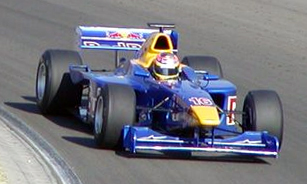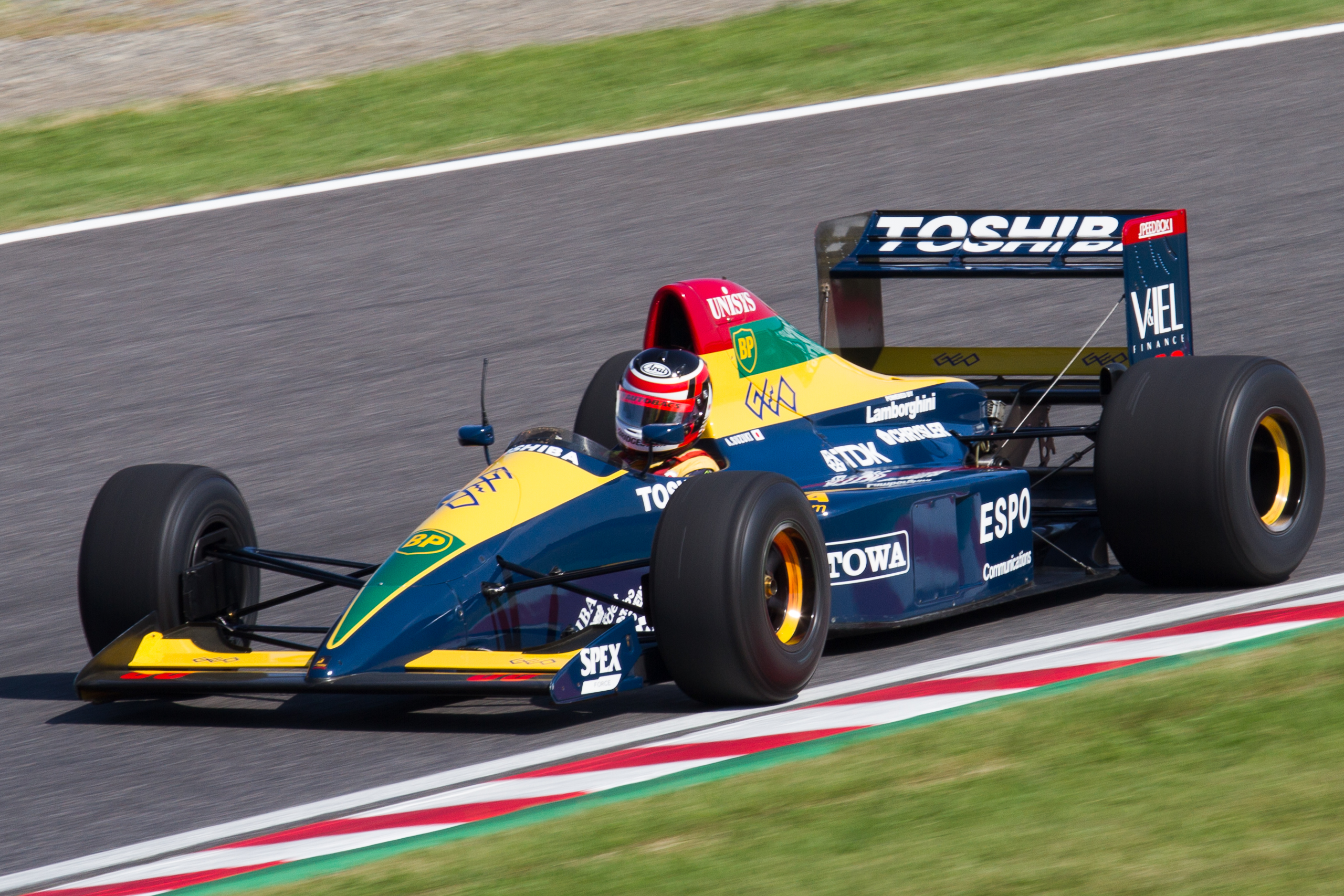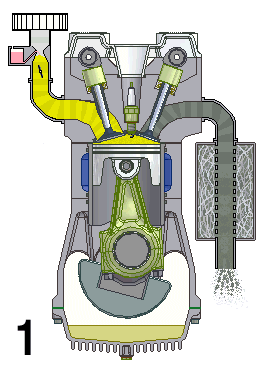|
Yamaha OX77 Engine
The Yamaha OX77 is a naturally aspirated gasoline-powered V8 racing engine, developed and built by Yamaha for Formula 3000, specifically the Japanese Formula 3000 Championship, between 1987 and 1988. It is derived from the Cosworth DFV engine, but uses 5 valves per cylinder instead of the DFV's 4. This engine notably won the 1988 Japanese Formula 3000 Championship, being driven by Aguri Suzuki is a Japanese former racing driver and motorsport executive, who competed in Formula One from to . Suzuki entered 88 Formula One Grands Prix, achieving a best result of third at the 1990 Japanese Grand Prix, becoming the first Asian driver t .... References Super Formula V8 engines Gasoline engines by model Engines by model OX77 {{Autoracing-stub ... [...More Info...] [...Related Items...] OR: [Wikipedia] [Google] [Baidu] |
Yamaha Motor Company
is a Japanese mobility manufacturer that produces motorcycles, motorboats, outboard motors, and other motorized products. The company was established in the year 1955 upon separation from Nippon Gakki Co., Ltd. (currently Yamaha Corporation) and is headquartered in Iwata, Shizuoka, Iwata, Shizuoka Prefecture, Shizuoka, Japan. The company conducts development, production and marketing operations through 109 consolidated subsidiaries as of 2012. Led by Genichi Kawakami, the company's founder and first president, Yamaha Motor spun off from musical instrument manufacturer Yamaha Corporation in 1955 and began production of its first product, the YA-1 125cc motorcycle. It was quickly successful and won the 3rd Mount Fuji Ascent Race in its class. The company's products include motorcycles, Scooter (motorcycle), scooters, motorized bicycles, boats, sail boats, personal watercraft, swimming pools, utility boats, fishing boats, outboard motors, 4-wheel All-terrain vehicle, ATVs, recrea ... [...More Info...] [...Related Items...] OR: [Wikipedia] [Google] [Baidu] |
Formula 3000
Formula 3000 (F3000) was a type of open wheel, single seater formula racing, occupying the tier immediately below Formula One and above Formula Three. It was so named because the cars were powered by 3.0 L engines. Formula 3000 championships FIA International Formula 3000 Championship The most prestigious F3000 series, International Formula 3000, was introduced by the Fédération Internationale de l'Automobile (FIA) in 1985 to replace Formula Two, and was itself replaced by the GP2 Series in 2005. While the International series is usually synonymous with F3000, other series racing to F3000 specification have existed. British Formula 3000/F2 Championship A small British Formula 3000 series ran for several years in the late 1980s and early 1990s, usually using year-old cars. Founded in 1989 as the British Formula 3000 Championship, the series was renamed the British Formula Two Championship in 1992, but grids diminished quickly and it was ended after the 1994 season. I ... [...More Info...] [...Related Items...] OR: [Wikipedia] [Google] [Baidu] |
Gasoline Engines By Model
Gasoline (North American English) or petrol (English in the Commonwealth of Nations, Commonwealth English) is a petrochemical product characterized as a transparent, yellowish, and flammable liquid normally used as a fuel for spark-ignited internal combustion engines. When formulated as a fuel for petrol engine, engines, gasoline is chemically composed of organic compounds derived from the fractional distillation of petroleum and later chemically enhanced with gasoline additives. It is a high-volume profitable product produced in crude oil refineries. The ability of a particular gasoline blend to resist premature ignition (which causes Engine knocking, knocking and reduces efficiency in reciprocating engines) is measured by its octane rating. Tetraethyl lead was once widely used to increase the octane rating but is not used in modern automotive gasoline due to the Lead poisoning#Gasoline, health hazard. Aviation, off-road motor vehicles, and racing car engines still use leaded ... [...More Info...] [...Related Items...] OR: [Wikipedia] [Google] [Baidu] |
V8 Engines
A V8 engine is an eight-cylinder piston engine in which two banks of four cylinders share a common crankshaft and are arranged in a V configuration. Origins The first known V8 was the Antoinette, designed by Léon Levavasseur, and built in 1904 by the French Antoinette company for use in speedboat racing, cars, and later, airplanes. Also in 1904, V8 engines began small-scale production by Renault and Buchet for use in race cars. Design V-angle Most engines use a V-angle (the angle between the two banks of cylinders) of 90 degrees. This angle results in good engine balance, which results in low vibrations. However, the downside is the greater width of the engine compared to those that use a smaller V-angle. V8 engines with a 60-degree V-angle were used in the 1996–1999 Ford Taurus SHO, the 2005–2011 Volvo XC90, and the 2006–2009 Volvo S80. The Ford engine used a 60-degree V-angle because it was based on a V6 engine with a 60-degree V-angle. Both ... [...More Info...] [...Related Items...] OR: [Wikipedia] [Google] [Baidu] |
Super Formula
The Japanese Super Formula Championship is a formula racing series held primarily in Japan. It is considered to be the pinnacle of single-seater racing in Japan or Asia as a whole, making it one of the top motorsport series in the region. The series is sanctioned by the Japan Automobile Federation (JAF) and managed by Japan Race Promotion (JRP). , Super Formula is the second fastest racing series in the world, after Formula One. The first Japanese top formula championship was held in 1973 as the All-Japan Formula 2000 Championship. In 1978, the series transformed into the All-Japan Formula Two Championship, and again in 1987, into the All-Japan Formula 3000 Championship. For the most part, these Japanese racing series closely followed their European counterparts in terms of technical regulations. The JRP was established in 1995, and began managing the series in 1996, under its new name, the Formula Nippon Championship. This began what is commonly known as the modern era of the s ... [...More Info...] [...Related Items...] OR: [Wikipedia] [Google] [Baidu] |
Aguri Suzuki
is a Japanese former racing driver and motorsport executive, who competed in Formula One from to . Suzuki entered 88 Formula One Grands Prix, achieving a best result of third at the 1990 Japanese Grand Prix, becoming the first Asian driver to score a podium finish. He also won the Japanese Formula 3000 Championship in 1988 Japanese Formula 3000 Championship, 1988, and later finished third overall at the 24 Hours of Le Mans in 1998 24 Hours of Le Mans, 1998. He was also a race-winner in the All-Japan GT Championship. He became involved in team ownership after his Formula One career, first forming Autobacs Racing Team Aguri (ARTA) in 1997 in partnership with Autobacs. ARTA has competed mostly in Super GT, where they have won titles in both the GT500 and GT300 classes. He was the owner of the Super Aguri F1, Super Aguri F1 team, which participated in Formula One from to . He also formed Team Aguri, which raced in Formula E from 2014 to 2016. Early life Aguri Suzuki was born in ... [...More Info...] [...Related Items...] OR: [Wikipedia] [Google] [Baidu] |
1988 Japanese Formula 3000 Championship
The 1988 Japanese Formula 3000 Championship was contested over 8 rounds. 18 different teams, 24 different drivers, 5 different chassis and 3 different engines competed. Calendar Final point standings Driver For every race points were awarded: 9 points to the winner, 6 for runner-up, 4 for third place, 3 for fourth place, 2 for fifth place and 1 for sixth place. No additional points were awarded. The best 6 results count. Two drivers had a point deduction, which are given in (). Complete Overview R=retired NS=did not start NQ=did not qualify {{DEFAULTSORT:1988 Japanese Formula 3000 Season Formula 3000 Super Formula ... [...More Info...] [...Related Items...] OR: [Wikipedia] [Google] [Baidu] |
Cosworth DFV
The DFV is an internal combustion engine that was originally produced by Cosworth for Formula One motor racing. The name is an abbreviation of ''Double Four Valve'', the engine being a V8 development of the earlier four-cylinder FVA, which had four valves per cylinder. Its development in 1967 for Colin Chapman's Team Lotus was sponsored and funded by major American automotive manufacturer Ford. For many years it was the dominant engine in Formula One, with the whole engine program funded by Ford's European division, Ford Europe and engines badged as "Ford" for Formula One championship races. DFVs were widely available from the late 1960s to the mid 1980s and were used by every specialist team in F1 during this period with the exception of Ferrari, Alfa Romeo, Renault, BRM and Matra, who all designed, produced and ran their own engines. Variants of this engine were also used in other categories of racing, including CART, Formula 3000 and sports car racing. The engine is a 90 ... [...More Info...] [...Related Items...] OR: [Wikipedia] [Google] [Baidu] |
Japanese Formula 3000
The Japanese Super Formula Championship is a formula racing series held primarily in Japan. It is considered to be the pinnacle of single-seater racing in Japan or Asia as a whole, making it one of the top motorsport series in the region. The series is sanctioned by the Japan Automobile Federation (JAF) and managed by Japan Race Promotion (JRP). , Super Formula is the second fastest racing series in the world, after Formula One. The first Japanese top formula championship was held in 1973 as the All-Japan Formula 2000 Championship. In 1978, the series transformed into the All-Japan Formula Two Championship, and again in 1987, into the All-Japan Formula 3000 Championship. For the most part, these Japanese racing series closely followed their European counterparts in terms of technical regulations. The JRP was established in 1995, and began managing the series in 1996, under its new name, the Formula Nippon Championship. This began what is commonly known as the modern era of the s ... [...More Info...] [...Related Items...] OR: [Wikipedia] [Google] [Baidu] |
Petrol Engine
A petrol engine (gasoline engine in American and Canadian English) is an internal combustion engine designed to run on petrol (gasoline). Petrol engines can often be adapted to also run on fuels such as liquefied petroleum gas and ethanol blends (such as '' E10'' and '' E85''). They may be designed to run on petrol with a higher octane rating, as sold at petrol stations. Most petrol engines use spark ignition, unlike diesel engines which run on diesel fuel and typically use compression ignition. Another key difference to diesel engines is that petrol engines typically have a lower compression ratio. History The first practical petrol engine was built in 1876 in Germany by Nicolaus August Otto and Eugen Langen, although there had been earlier attempts by Étienne Lenoir in 1860, Siegfried Marcus in 1864 and George Brayton in 1873. Design Thermodynamic cycle Most petrol engines use either the four-stroke Otto cycle or the two-stroke cycle. Petrol engines have also ... [...More Info...] [...Related Items...] OR: [Wikipedia] [Google] [Baidu] |
V8 Engine
A V8 engine is an eight- cylinder piston engine in which two banks of four cylinders share a common crankshaft and are arranged in a V configuration. Origins The first known V8 was the Antoinette, designed by Léon Levavasseur, and built in 1904 by the French Antoinette company for use in speedboat racing, cars, and later, airplanes. Also in 1904, V8 engines began small-scale production by Renault and Buchet for use in race cars. Design V-angle Most engines use a V-angle (the angle between the two banks of cylinders) of 90 degrees. This angle results in good engine balance, which results in low vibrations. However, the downside is the greater width of the engine compared to those that use a smaller V-angle. V8 engines with a 60-degree V-angle were used in the 1996–1999 Ford Taurus SHO, the 2005–2011 Volvo XC90, and the 2006–2009 Volvo S80. The Ford engine used a 60-degree V-angle because it was based on a V6 engine with a 60-degree V-angle. ... [...More Info...] [...Related Items...] OR: [Wikipedia] [Google] [Baidu] |
Naturally Aspirated Engine
A naturally aspirated engine, also known as a normally aspirated engine, and abbreviated to N/A or NA, is an internal combustion engine in which air intake depends solely on atmospheric pressure and does not have forced induction through a turbocharger or a supercharger. Description In a naturally aspirated engine, air for combustion ( Diesel cycle in a diesel engine or specific types of Otto cycle in petrol engines, namely petrol direct injection) or an air/fuel mixture (traditional Otto cycle petrol engines), is drawn into the engine's cylinders by atmospheric pressure acting against a partial vacuum that occurs as the piston travels downwards toward bottom dead centre during the intake stroke. Owing to innate restriction in the engine's inlet tract, which includes the intake manifold, a small pressure drop occurs as air is drawn in, resulting in a volumetric efficiency of less than 100 percent—and a less than complete air charge in the cylinder. The density of th ... [...More Info...] [...Related Items...] OR: [Wikipedia] [Google] [Baidu] |









